EDA: Electrodermal Activity
FULL LINE OF ELECTRODERMAL ACTIVITY ACQUISITION & ANALYSIS SOLUTIONS
Wirelessly log or live view high-quality EDA data
Powerful, sophisticated acquisition and analysis algorithms.
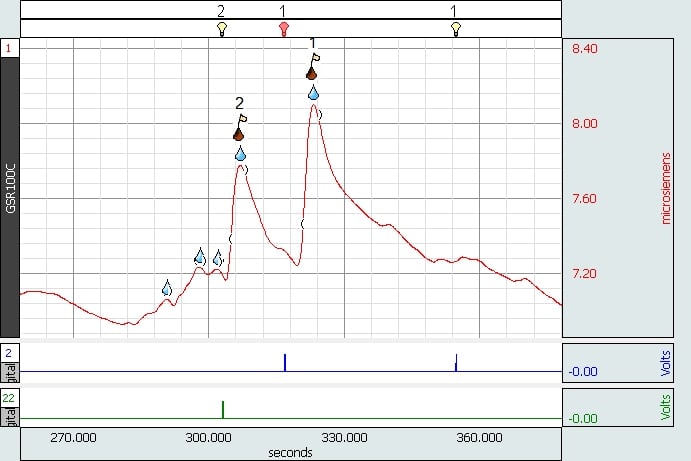
Automatic EDA and Marking Routines
Measure the skin conductance level (SCL) and skin conductance response (SCR) as they vary with sweat gland (eccrine) activity due to stress, arousal or emotional excitement. Record wirelessly with BioNomadix® for both in lab applications and with the BioNomadix Logger to record data from participants at home, work and play, or use wired EDA100C amplifiers in the lab or EDA100C-MRI in the MRI. AcqKnowledge® software includes a fully-automated electrodermal response scoring tool that locates skin conductance responses, visually identifies them on the waveform and extracts key measures. Automatic event related EDA analysis can also be performed by locating the onset of the discrete stimuli and identifying specific and nonspecific SCR within a user specified time range. AcqKnowledge software can interface with multiple stimulus presentation programs including Superlab®, E-Prime®, DirectRT®, MediaLab®, Inquisit®, and Presentation®, plus Vizard® for virtual reality (VR). Use the new Focus Areas analysis tool for targeted EDA Analysis. Focus Areas allow the user to specify and mark areas of interest in the data and run automated analysis routines or the cycle detector specifically on the Focus Areas instead of the entire data file.
Try EDA tools in the free AcqKnowledge Demo
See More...Hardware Packages | EDA: Electrodermal Activity
Hardware Bundles are complete solutions for the specified application. Choose your preferred platform and bundle, then click "Request Pricing" to request an estimate, add/remove items, or complete purchase. If you have questions about specific items, click through to the product web page for details and specifications, or contact your Local Sales contact.
Wired
-
MP36R System plus EDA electrode setup
Wired | EDA: Electrodermal Activity
MP36R with AcqKnowledge plus EDA lead set with disposable EDA electrodes & isotonic gel
-
MP36R System plus EDA transducer
Wired | EDA: Electrodermal Activity
MP36R with AcqKnowledge plus EDA finger transducer and gel
-
MP160 System + EDA amp, leads & reusable EDA electrodes
Wired | EDA: Electrodermal Activity
MP160 with AcqKnowledge plus EDA amp with reusable EDA electrodes
-
MP160 System + EDA amp, leads & disposable electrodes
Wired | EDA: Electrodermal Activity
MP160 System with EDA amplifier, electrode leads, and disposable electrodes
MP36R System plus EDA electrode setup
- 1 x MP36R Systems
- 1 x EDA Electrodes
- 1 x Electrode Gel, Isotonic, 114 g
MP36R System plus EDA transducer
- 1 x MP36R Systems
- 1 x EDA Finger Transducer, BSL
- 1 x Electrode Gel, Isotonic, 114 g
MP160 System + EDA amp, leads & reusable EDA electrodes
- 1 x MP160 Data Acquisition Systems
- 1 x EDA Electrodermal Activity Amplifier
- 1 x Skin Conductance Trans, TP
- 1 x Electrode Gel, Isotonic, 114 g
MP160 System + EDA amp, leads & disposable electrodes
- 1 x MP160 Data Acquisition Systems
- 1 x EDA Electrodermal Activity Amplifier
- 1 x EDA Electrodes
- 2 x Lead Wires with Clip
- 1 x Electrode Gel, Isotonic, 114 g
Wireless
-
BioNomadix Logger with EDA
Wireless | EDA: Electrodermal Activity
BioNomadix Logger with AcqKnowledge plus BioNomadix wireless EDA transmitter with disposable electrodes
-
MP160 System + wireless EDA with disposable electrodes
Wireless | EDA: Electrodermal Activity
MP160 with AcqKnowledge plus BioNomadix wireless EDA with disposable electrodes
BioNomadix Logger with EDA
- 1 x BioNomadix Wireless Wearable Physiology Logger
- 1 x EDA Electrodes
- 1 x Electrode Leads - BioNomadix Wireless
- 1 x Electrode Gel, Isotonic, 114 g
- 1 x Electrode Impedance Checker
MP160 System + wireless EDA with disposable electrodes
- 1 x MP160 Data Acquisition Systems
- 1 x BioNomadix Wireless PPG and EDA Amplifier
- 1 x EDA Electrodes
- 1 x Electrode Leads - BioNomadix Wireless
- 1 x Electrode Gel, Isotonic, 114 g
MRI
-
MP160 System + EDA amp and disposable RT electrodes for MRI
MRI | EDA: Electrodermal Activity
MP160 with AcqKnowledge plus EDA amp & disposable radiotranslucent electrodes for MRI
MP160 System + EDA amp and disposable RT electrodes for MRI
- 1 x MP160 Data Acquisition Systems
- 1 x MRI Filtered Cable Sets
- 2 x Leads - RT for MRI
- 1 x EDA Electrodermal Activity Amplifier for MRI
- 1 x Disp. RT Dry Electrode for EDA, 100/pk
- 1 x Electrode Gel, Isotonic, 114 g
Details
Electrodermal Response Signal Processing
For basic EDA processing, take advantage of numerous filters, tools, and Automated Analysis routines in AcqKnowledge.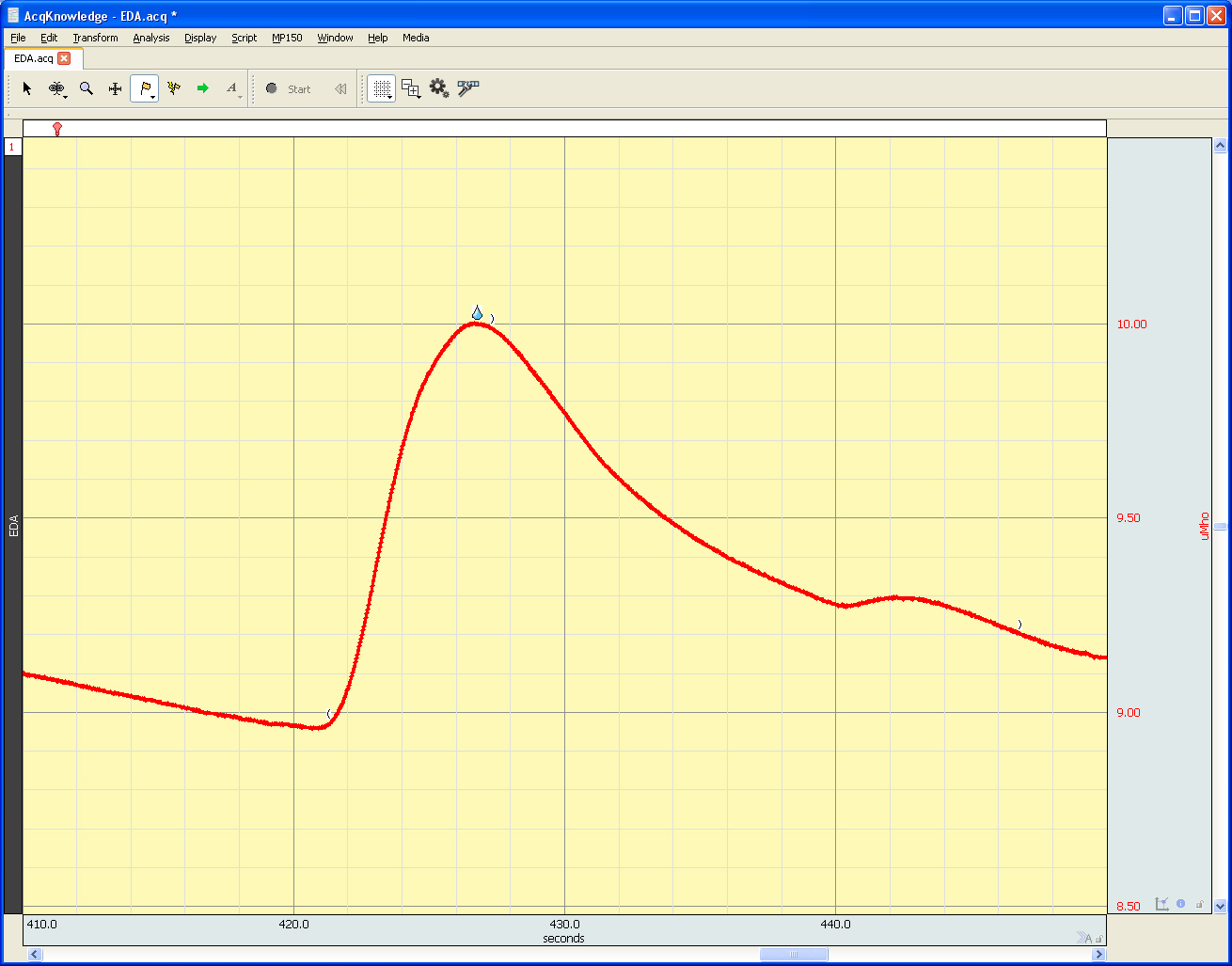
- Derive Phasic EDA from Tonic
- Event-Related EDA Analysis
- Locate Skin Conductance Responses
- MRI Artifact Removal
Derive phasic EDA from tonic EDA
This transformation uses baseline smoothing or high pass filtering to construct a new Phasic EDA channel in the graph. This routine is automatically included in both the locate SCR and Event-related EDA routines.
Spontaneous EDA Analysis
For studies requiring the examination of spontaneously occurring skin conductance responses, such as social paradigms, cognitive tasks, and arousal studies, use the Locate SCR routine in AcqKnowledge to locate and score spontaneously occurring responses. Run the Event Related EDA Analysis and the software will provide a frequency analysis over a user defined time period, between events in the data, or over a user selected region of data.
Locate Skin Conductance Response
Locate SCRs analysis will identify skin conductance responses and visually score the waveform. All SCR events are marked on the tonic waveform. In the SCR location mode the software marks the event onset, SCR point of max response, and waveform end. Responses can also be manually adjusted using the event marking tools.
Event Related EDA Analysis
For determination and correlation of EDA responses tied to a particular controlled discrete stimulus (visual cue, tone, image, mechanical stimulation, light flash, etc.) AcqKnowledge offers a fully-automated event-related EDA analysis routine. The routine scores and reports the data in two steps.
First, discrete stimuli marked by TTL pulses or via manual insertion are converted into AcqKnowledge events by the digital input to stim events feature. The Digital input to stim events function works with TTL trigger information coming from applications such as Superlab®, E-Prime®, DirectRT®, MediaLab®, Inquisit®, Vizard®, and Presentation® and converts TTL data acquired on the digital channels of an MP device into useable stimulus events.
Next, stimulus events are marked as they occur in the data and AcqKnowledge automatically measures, or averages the response to the stimulus. To determine whether stimulus responses are specific (SSCR) or nonspecific (NSSCR), users can specify a time window around the stimulus event for measuring the data. Results can be pasted to a Journal file or automatically exported to a spreadsheet.
The results of the analysis are broken down into four parts and follow the guidelines set forth in the Handbook of Psychophysiology.
- Event Related SCR data: Includes Specific SCR (SSCR) responses that fall within the defined time window after a discrete stimulus. Measures output include:
- Stimulus Delivery Time
- Skin Conductance Level
- Response latency
- SCR Amplitude
- SCR rise time
- SCR Size
- SCR Onset
- Stimulus Type
- Unmatched Stimulus Event Summary: Includes all discrete stimulus events that were not matched with a valid SCR response. The table displays event time and stimulus type.
- SCR Frequency Analysis: Includes each stimulus type, the frequency of specific and nonspecific responses along with the predefined epoch width.
- Stimulus Matching Summary: Includes the amplitude, magnitude, total number of matched, total number of non-matched, and frequency percentages for each stimulus type.
Advanced Features Spotlight
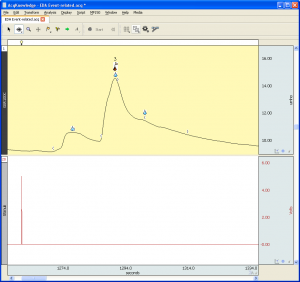
Electrodermal Activity (EDA) Scoring
Record and analyze EDA/GSR data wirelessly with BioNomadix or with standard wired amplifiers. AcqKnowledge includes a fully automated scoring system for electrodermal activity (EDA) data. More...
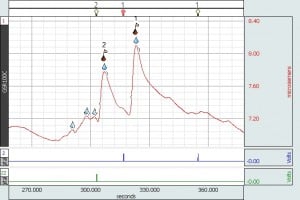
AcqKnowledge® includes a fully-automated suite of tools for Event Related Electrodermal Activity applications. The analysis is based around the timing marks that come from stimulus More...
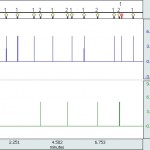
Stimulus Presentation Event Marking
AcqKnowledge® includes a fully automated event driven data reduction program for Event-Related Potentials (ERP) and other stimulus-response (S-R) applications. The feature comprises two tools: Digital More...
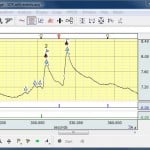
For studies requiring the examination of spontaneously occurring skin conductance responses, such as social paradigms, cognitive tasks, and arousal studies, use the Locate SCR routine More...
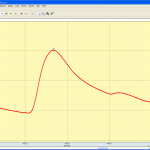
Skin Conductance Response Analysis
Skin Conductance Response (SCR) Analysis AcqKnowledge includes a fully automated skin conductance response (SCR) scoring system. The software will transform skin conductance level (SCL) data to More...
Videos
ON DEMAND WEBINARS
EDA Recording & Analysis Techniques
TUTORIAL VIDEOS & SCREENCASTS
EDA - SCR Event Related Analysis
Focus Areas | AcqKnowledge Tutorial
Noldus The Observer XT Import/Export in AcqKnowledge
Poker Study | BioNomadix Wireless Data
EL-CHECK Electrode Impedance Checker
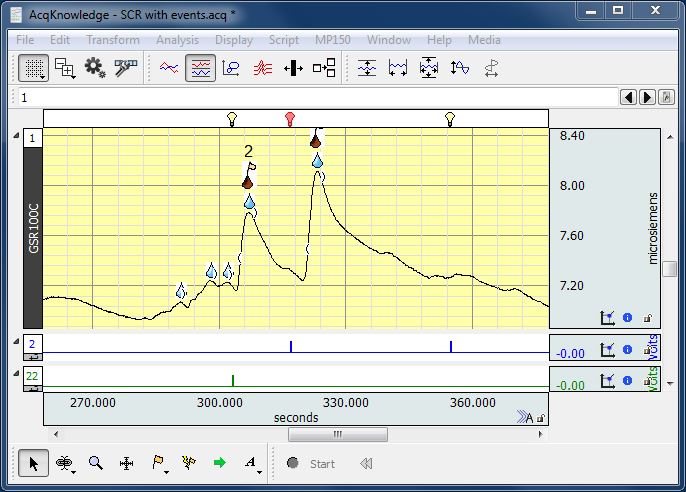
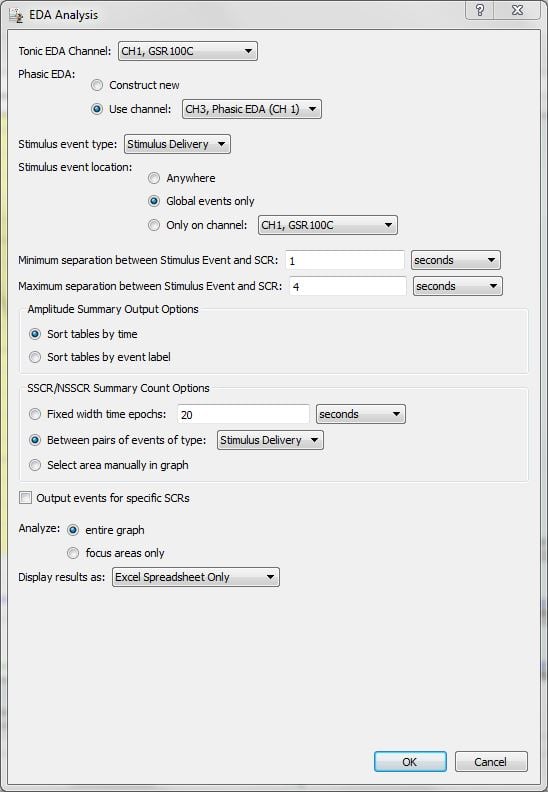
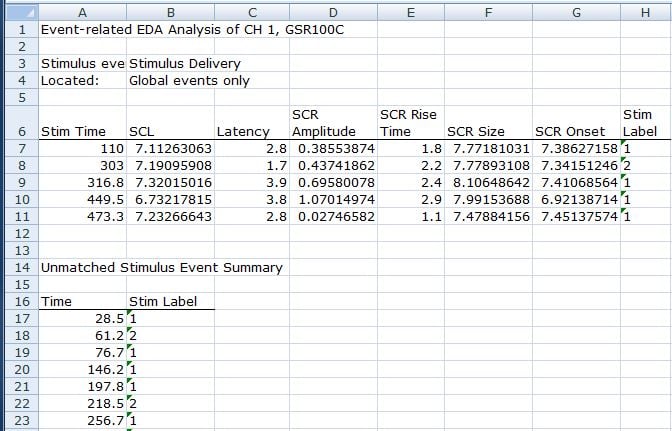
Stay Connected